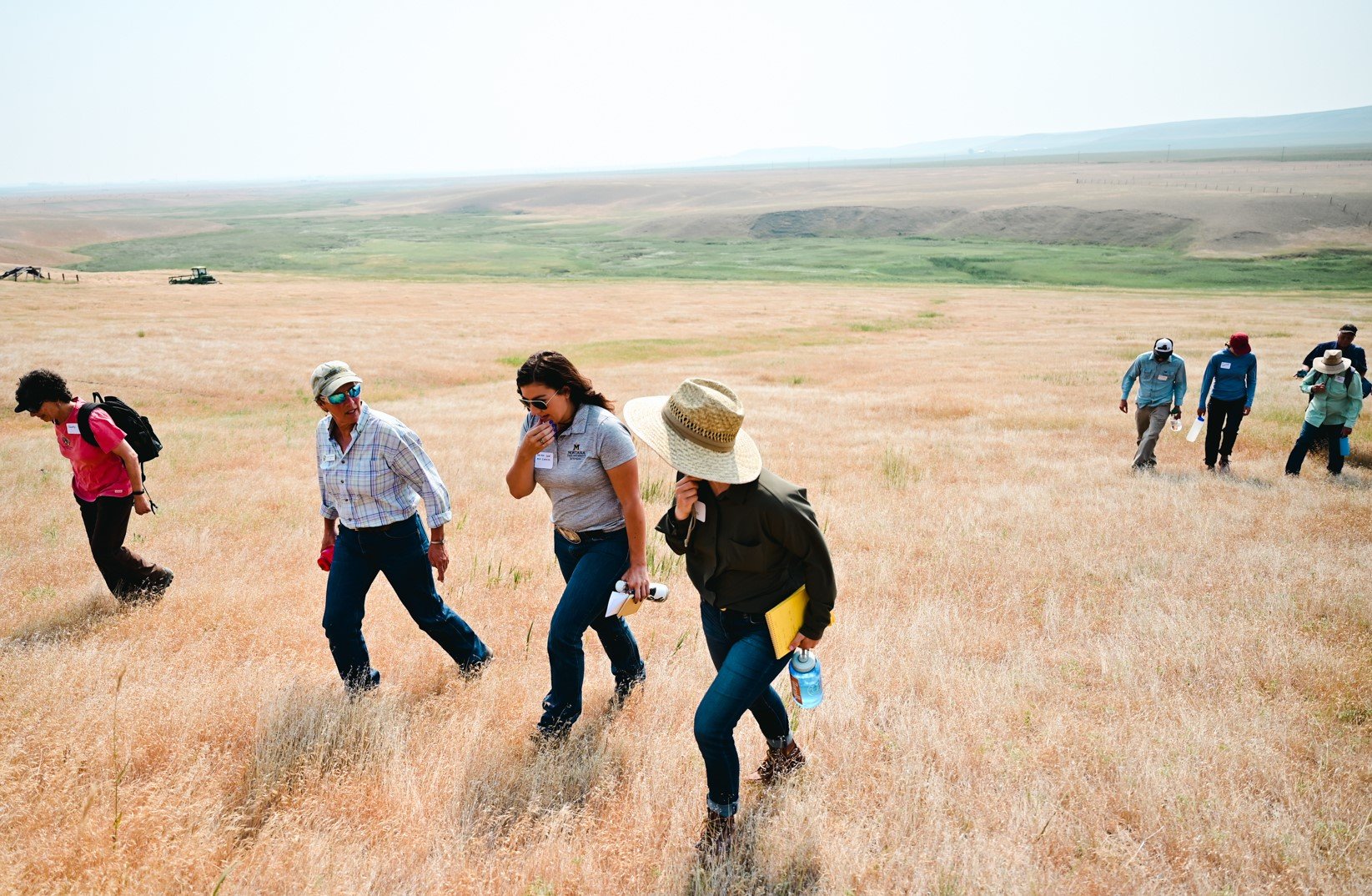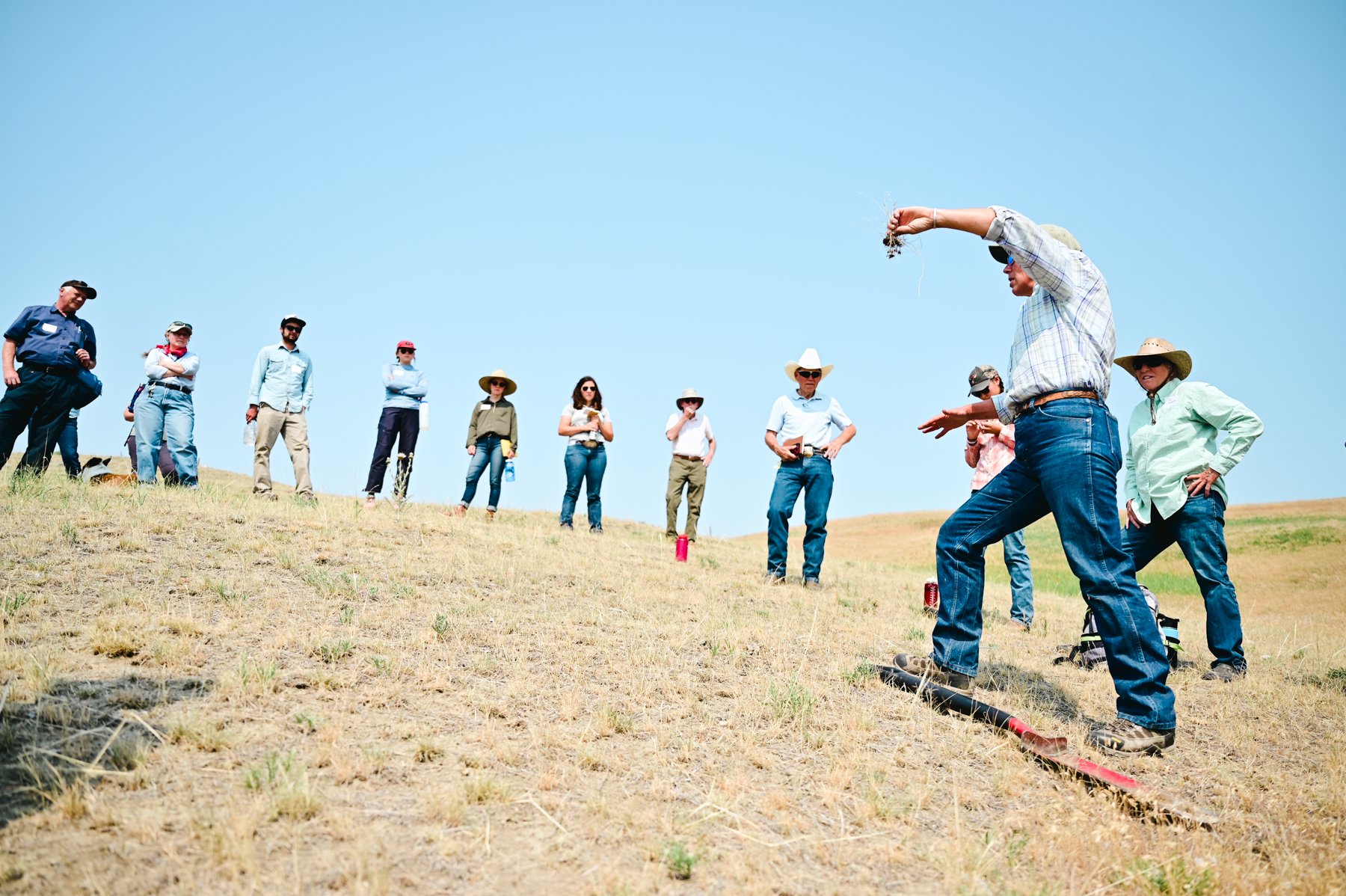Ranching Innovations during a Drought in Montana’s Golden Triangle
On a dry hillside in Conrad, Montana, a group of ranchers, farmers, environmentalists, geologists, students and teachers converge to walk Lisa Schmidt’s ranch and talk about soil health. They’re here to learn about some of Lisa’s practices and experiments for keeping up with the changing climate. This gathering is called a soil crawl. By 10am it’s already hot enough that participants are searching for shade to listen to introductory statements about Northern Plains Resource Council and Lisa Schmidt. The grasslands are whispering with a gentle breeze that brings some additional relief from the direct sun as the day's events begin.
Lisa Schmidt poses for a portrait on her ranch in Conrad, MT.
Normally, from this spot on Lisa’s ranch you can see the famed Rocky Mountain Front looming in the distance. But the dry summer has produced massive wildfires across the West, veiling the landscape in a thick haze. It’s 2021 and 90% of the West is in a state of drought. Montana is no exception. While it’s not the first drought for the area, the cumulative impacts have resulted in increased stress on the rancher and her livestock. The soil on Lisa’s ranch has become so dry at times that electric fences won’t ground in the dirt. At this point in the summer, the soil is crunchy beneath the feet of the visitors on the ranch who are wandering about the property, getting a feel for the land before setting out on a tour.
On top of a particularly dry year, grasshoppers have invaded Montana in swarms, decimating grasslands in their path. Dry weather increases the survival of nymphs and adult grasshoppers. Warm autumns allow grasshoppers more time for feeding and laying eggs, and having several dry years in a row usually leads up to a big grasshopper year. Walking down into a particularly green area on Lisa’s ranch, grasshoppers spring out and around the legs of the soil-crawl participants. It is already difficult for a rancher to prepare for the months of the year when the ground is frozen and unfarmable, but even more so when the grass you were saving for later gets wiped out by grasshoppers. “I have to decide whether or not to let my cows eat the grass now that I was saving out of fear that the grasshoppers will get to it first,” said Lisa. Despite these challenges, the mood of the soil crawl and its participants is curious, engaged, and hopeful.
Lisa has owned this ranch since 2006. Originally called the Graham ranch, it was designed around water. The ranch has 16 different springs. After the previous owner, Alistair Graham, passed away in 2005, Lisa and her late husband, Steve Hutton, wrote to the family expressing their interest in purchasing the property and sharing their vision for the ranch -- a place where they would continue the Grahams’ ranching legacy. Lisa’s passion for sustainable ranching inspired her to host a soil crawl with Northern Plains Resource Council. “I like to think Alistair pats me on my shoulder some days and others he shakes his head at me while he watches me figure all of this out,” said Lisa.
After Lisa’s introduction, Lisa’s close friend and Montana Bureau of Mines geologist Ginette Abdo, gives participants a sense of the forces that shaped the current landscape. Ginette tells a story of water and ice: a large sea once covered this land followed by a massive continental glacier. The rocks and soil, known as glacial till, found here today were deposited by receding glaciers.
Lisa shows the participants cheatgrass, an invasive brome that can become stuck in the teeth of livestock such that an animal can no longer eat and eventually starves. The plant is also irritating to the passerby as its hooks become stuck in the socks and shoes. To the chagrin of ranchers, cheatgrass is drought resistant and outcompetes native grasses. Lisa holds up the roots to the group and points to it’s very shallow root system. These small roots offer no water retention for the soil and make for easier erosion. Based on her own personal research and experience, Lisa decided to try to “fertilize the cheatgrass to death.” She takes everyone to a plot where she has doused the cheatgrass in manure. Sure enough, the cheatgrass is no more, and there are signs of new, native grasses poking up through the manure. This is a sign of hope for Lisa and that her theory worked.
Down near a small creek, the participants hear from Dr. Tony Hartshorn, a professor with the Department of Land Resources and Environmental Sciences (LRES) at Montana State University. He digs a chunk of earth from the bank of the creek and hands it around, bringing out other cross sections of earth he’s collected from elsewhere to show various root bases and soil densities. Dr. Hartshorn also shows participants how to identify the soil type.

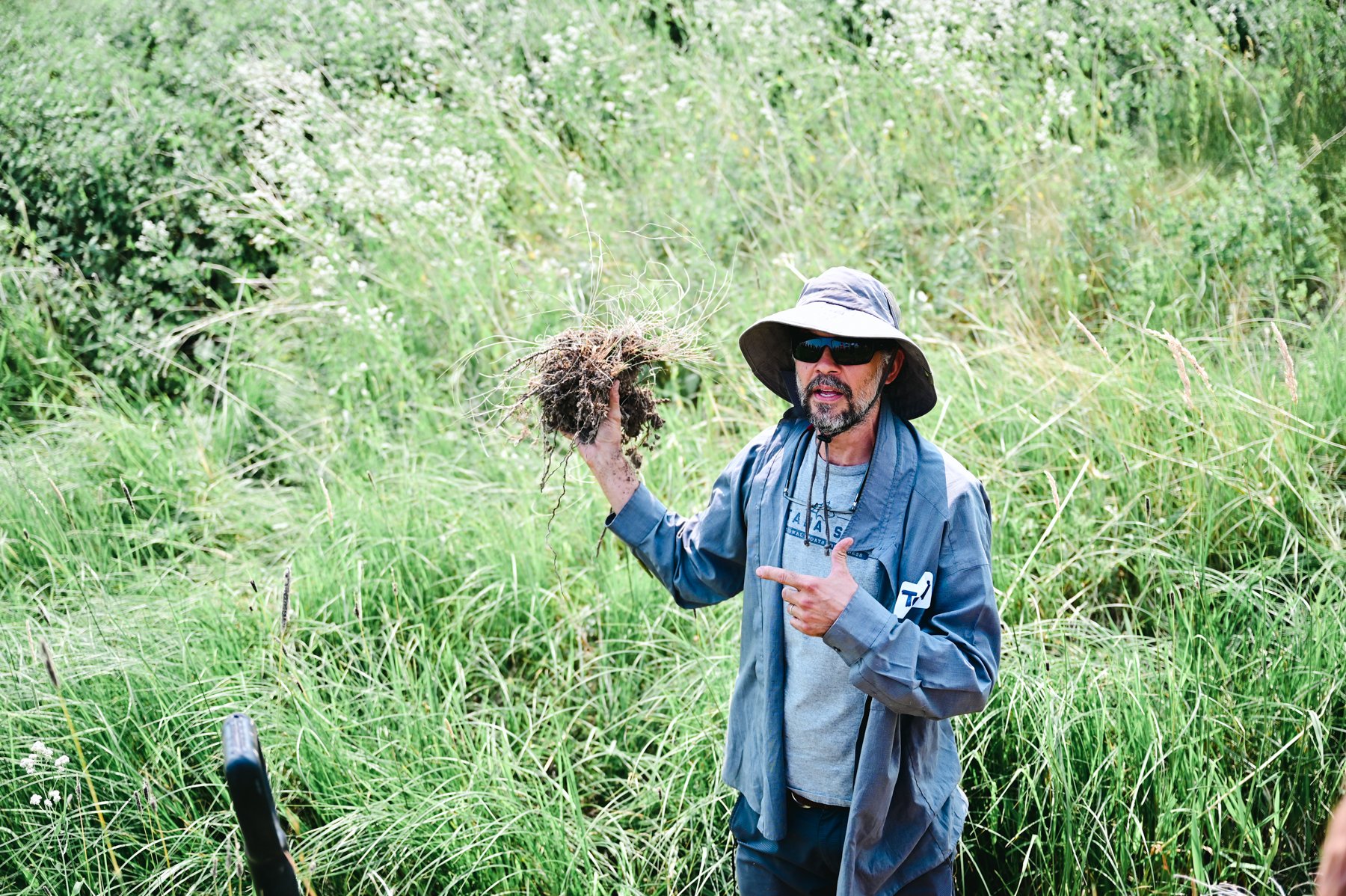
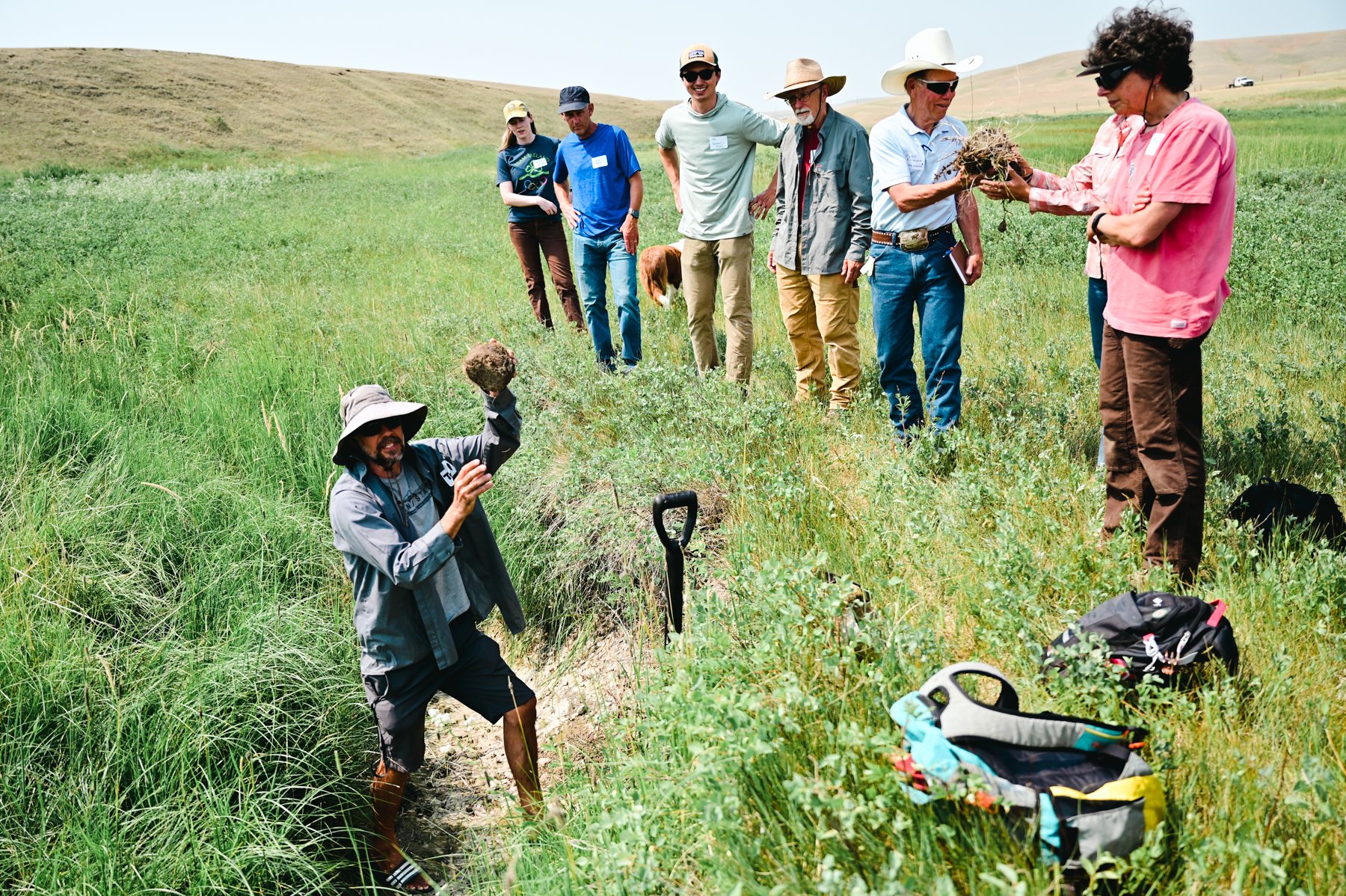
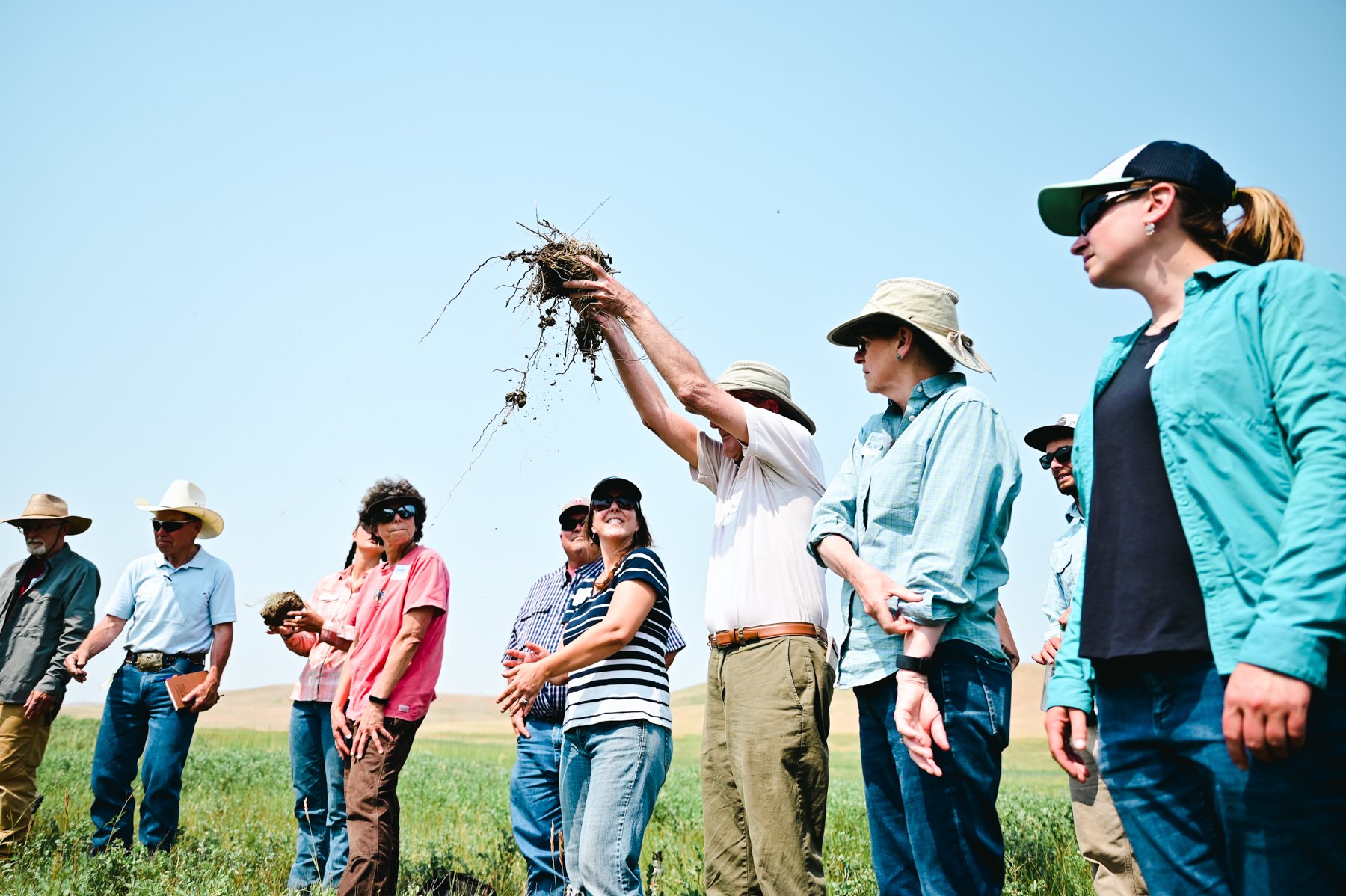

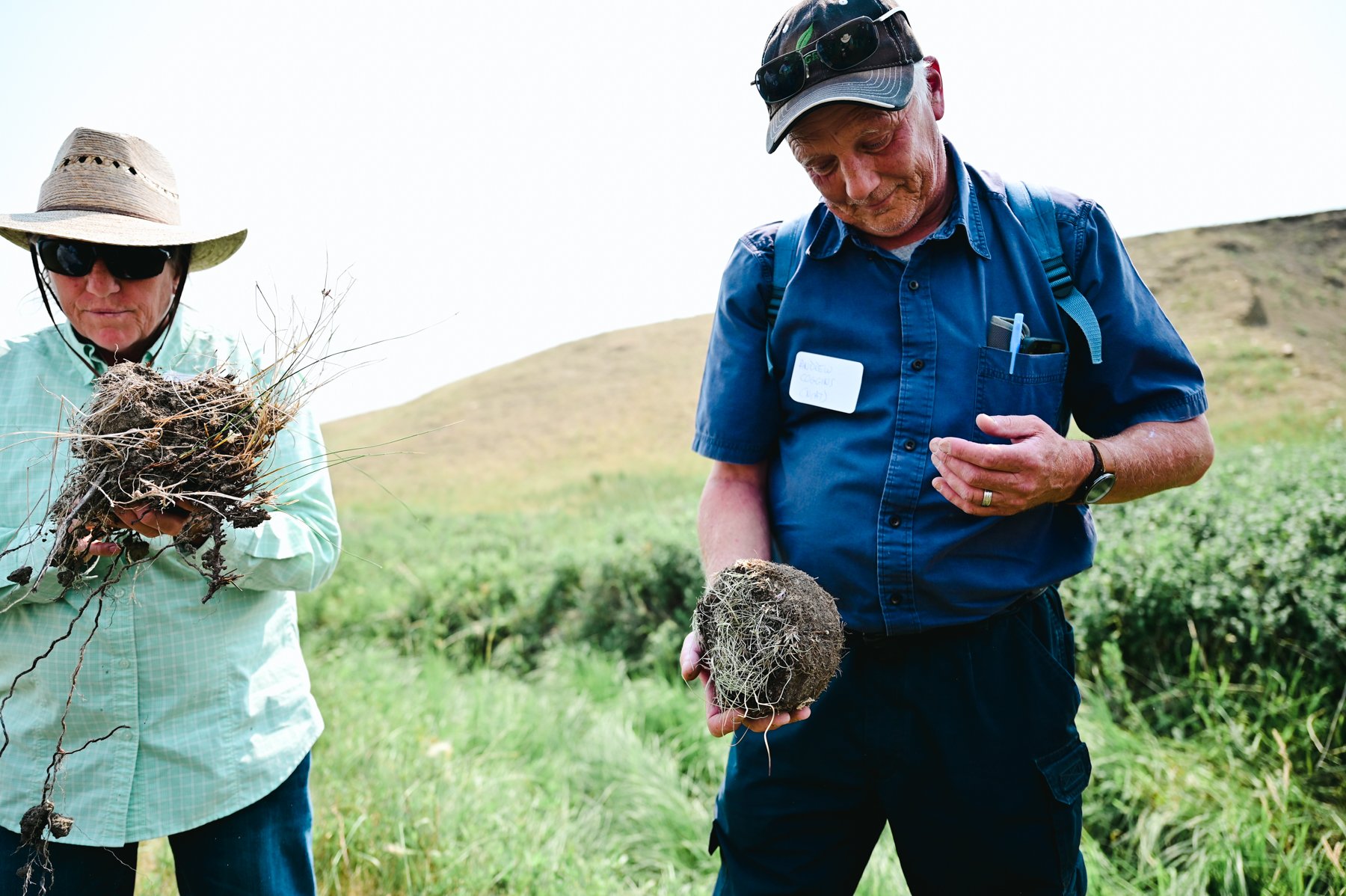
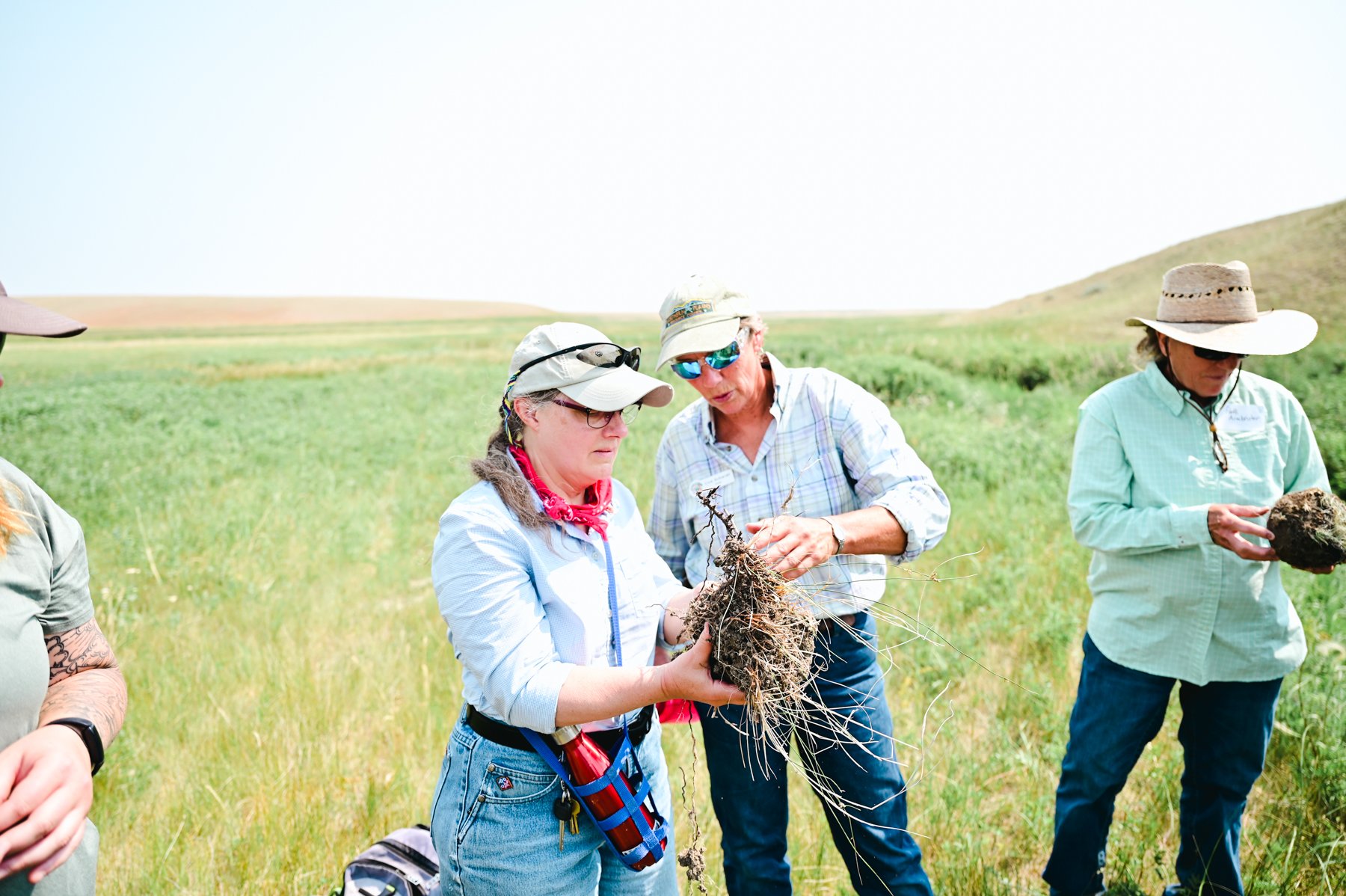

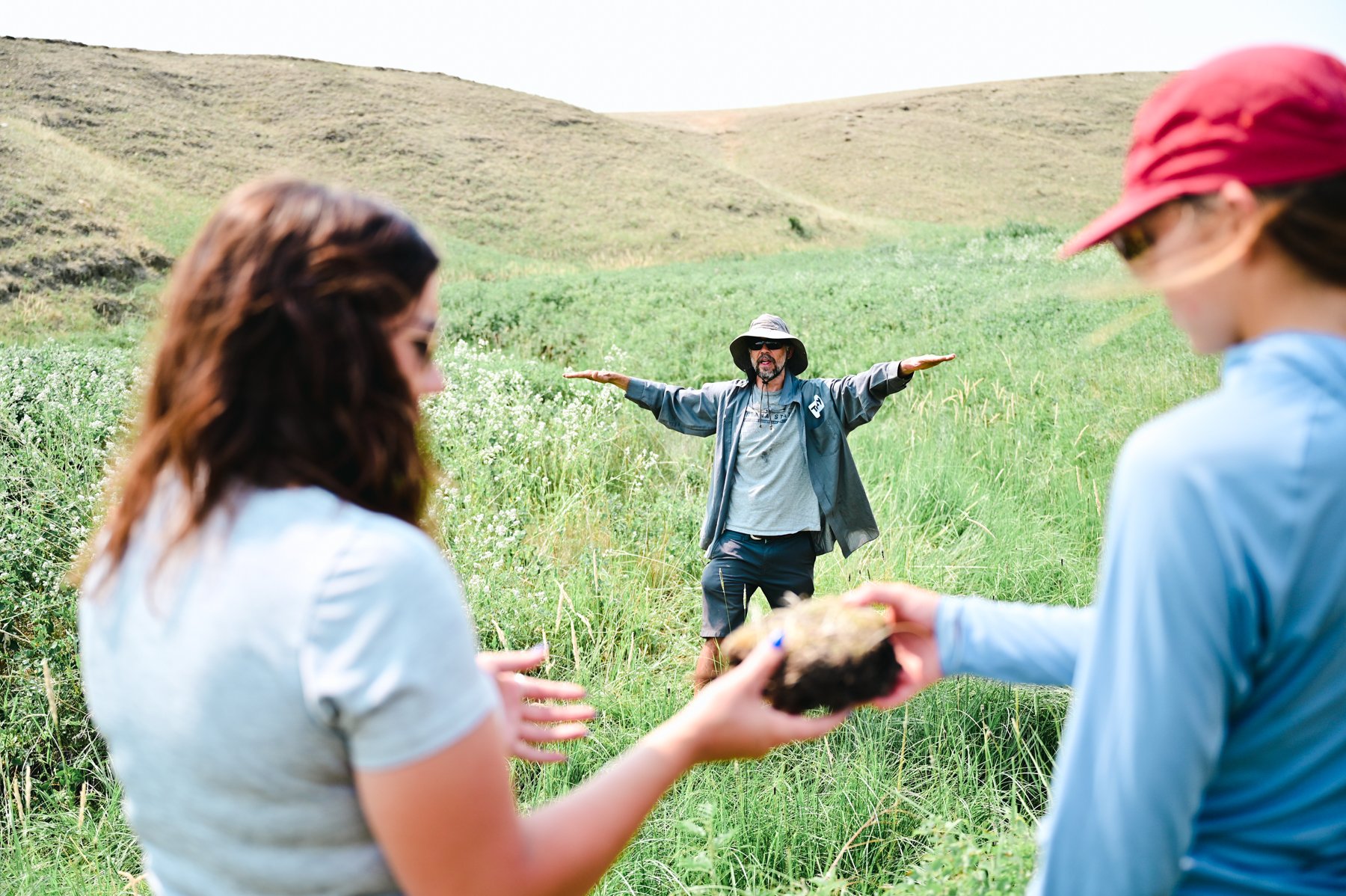
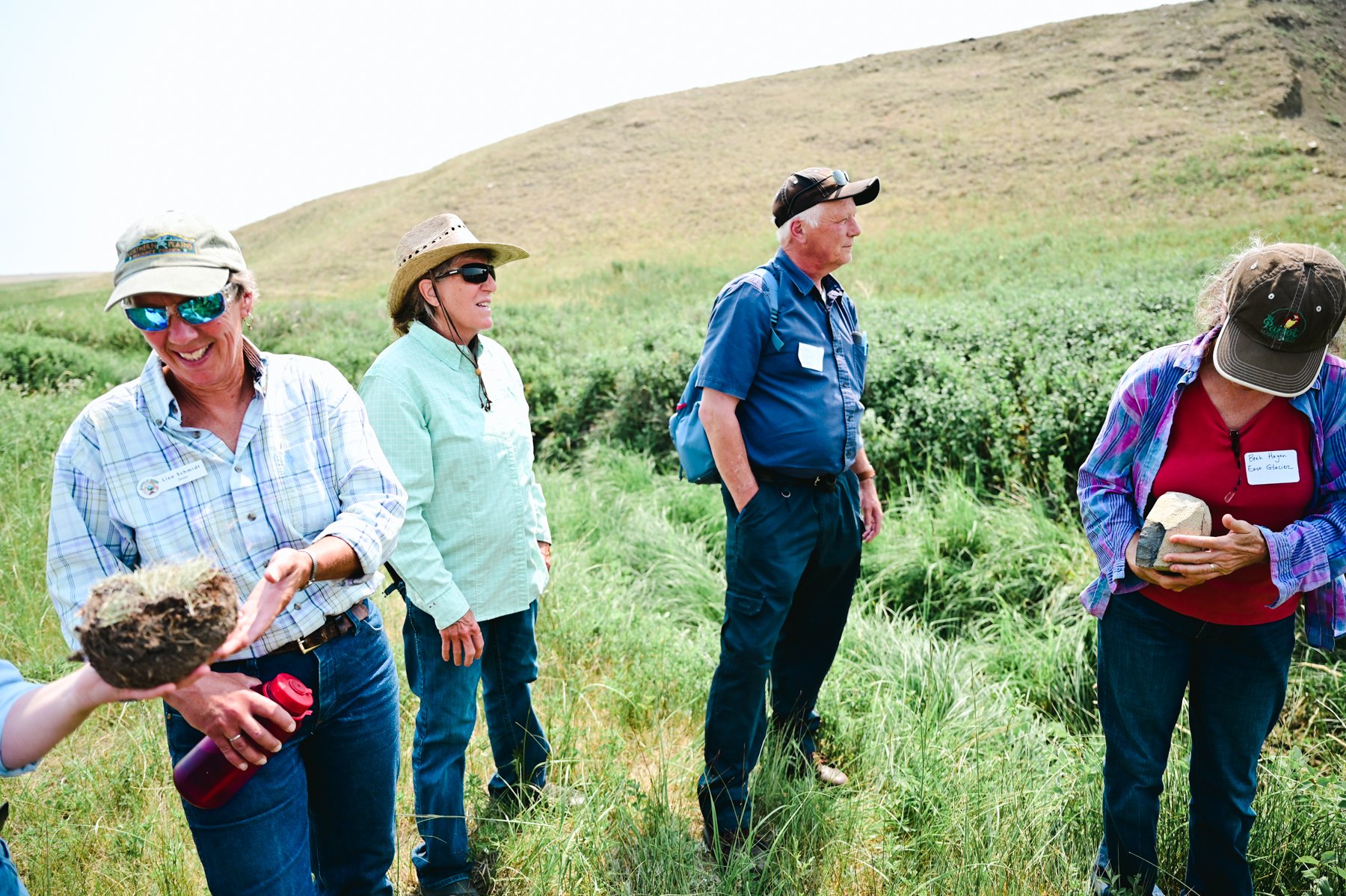
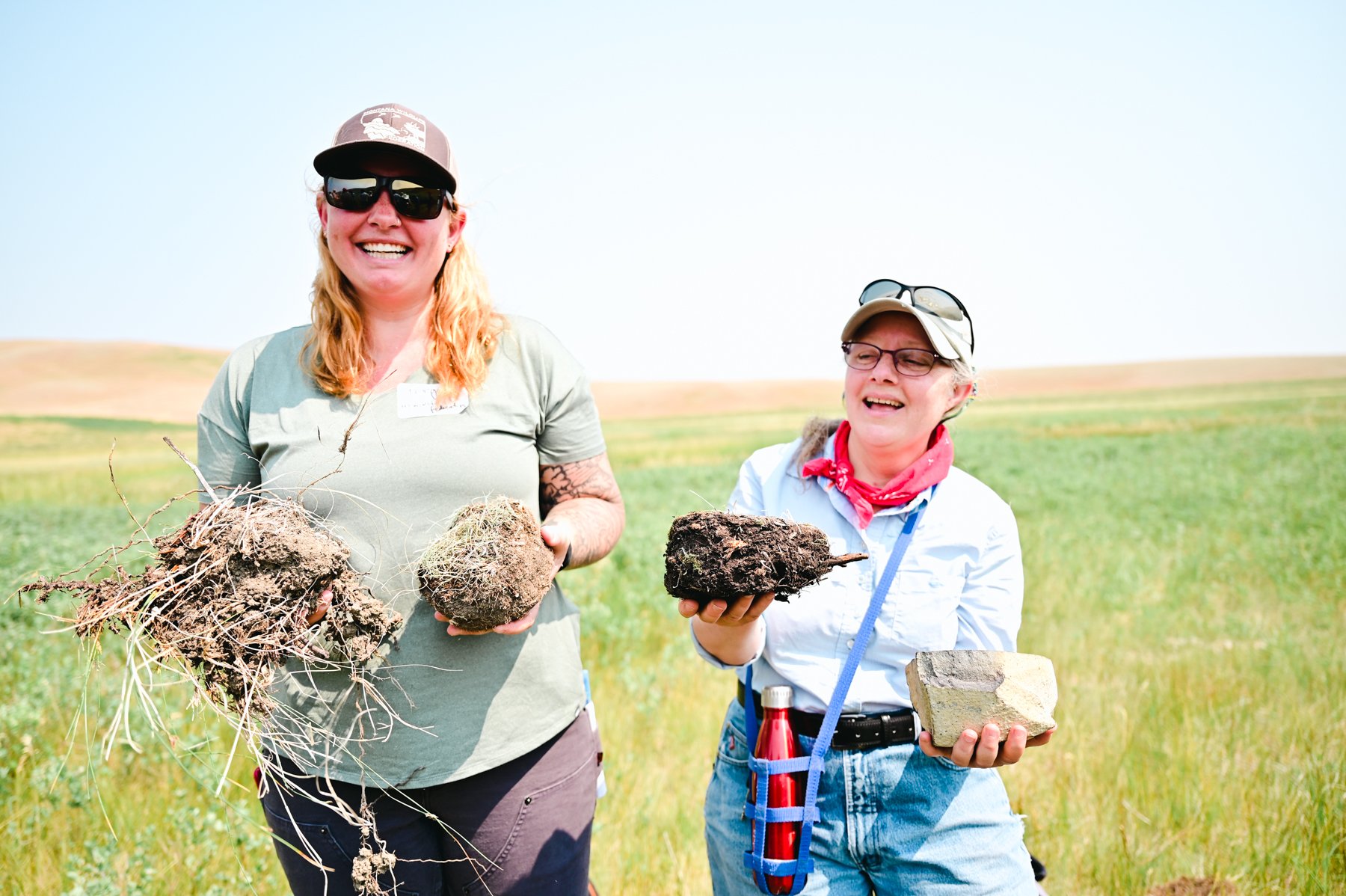
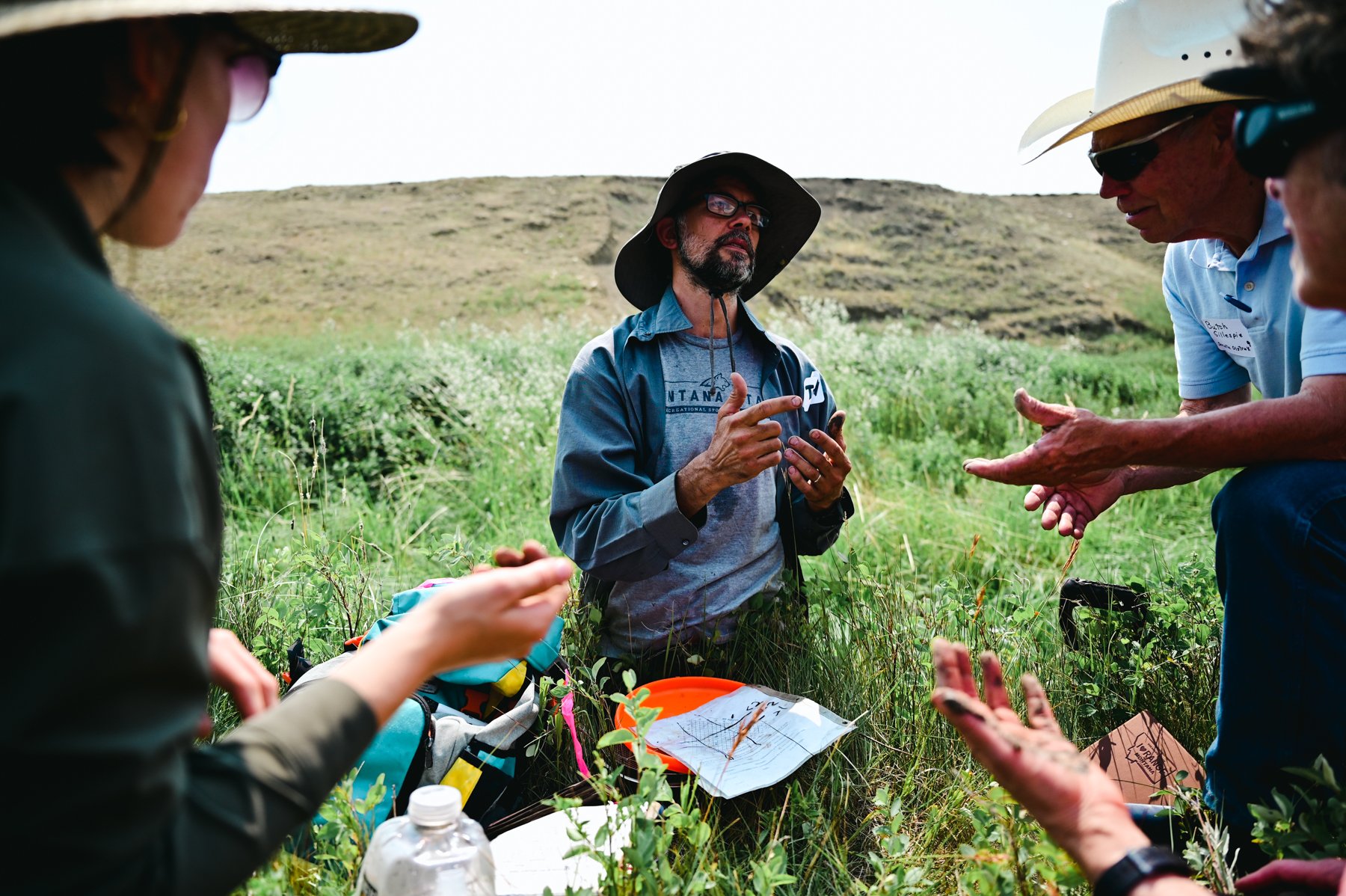
Next up to speak is regenerative agriculture aficionado and master gardener, Patti Armbrister. She holds a chunk of dried manure and points to large holes formed by burrowing dung beetles . Dung beetles perform essential ecosystem functions ranging from secondary seed dispersal to nutrient cycling and parasite suppression. They help with biological pest control and soil fertilization as well, and they are apparent on Lisa’s ranch. Patti’s holding the evidence in her hand. It’s a good sign to see evidence of dung beetles, and suggests the ranch ecosystem is healthy and functional.
Near where Patti is giving her talk about the importance of the dung beetle, the rest of the participants are standing on a section of land that is covered in leftover hay, the site of another one of Lisa’s experiments. Lisa is calling it hay mulching, feeding her cattle hay on parts of the ranch that lack water supply and are first to dry out. By putting down the hay in these areas, the leftover patches hold in moisture and keep the ground cool. Participants stick their hands under the base layer of hay and eyebrows raise and heads begin to nod, it's significantly cooler underneath the hay and new grass has begun to grow from the moisture that it holds. On this 95-degree day walking the ranch in the hot sun, one of the participants remarks, “I wish I could get my whole body under there.”
Amongst these methods for combating a particularly dry year, the participants discuss saline seeps, rotational grazing, and other successful techniques from other ranches throughout the day. The soil crawl is a place for people from all over, with different backgrounds to come together to discuss soil health, techniques, successes, and failures. The farmers and ranchers in the group are hoping to learn techniques they can apply to the complicated ecosystems on their own ranches. Their hope is that they can build healthy, resilient soil that can help them weather the next drought or severe weather event. Every trick or technique they learn may help them avoid making the hard choice to sell off a large portion of their herds to make ends meet.
While new soil science can help farmers, ranchers, and even the climate by locking carbon into the soil, it’s still a race against climate chaos driven by factors outside of their control. And weather continues to be a wild card. Lisa has done research on drought resistant grasses, ones that can rebound after one year of severe stress, possibly two but not likely after three. “Right now, I can’t even think about the possibility of drought continuing next year,” said Lisa.

